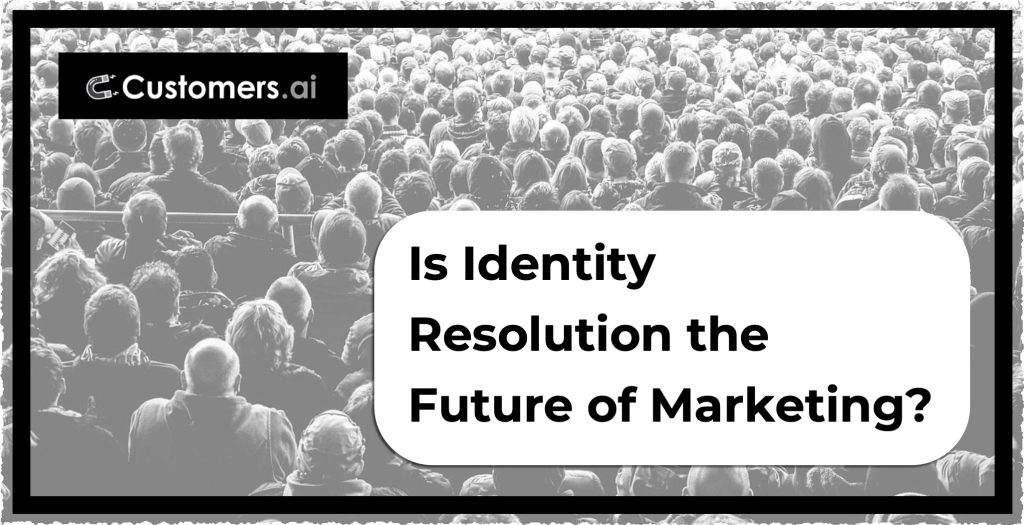Identity resolution has long been key to understanding the customer journey, traditionally enabling enterprise businesses to consolidate the many, many data points they have into a cohesive customer profile.
However, with recent shifts in the digital space, notably the phasing out of third-party cookies and increased privacy regulations, marketers and businesses of all sizes are taking notice of this technology.
In fact, a staggering 87% of marketers agree that identity resolution is key to future-proofing their campaigns!
As tools like Google Analytics evolve and restrict access to once readily available data, marketers are leaning into identity resolution to navigate attribution.
It makes us wonder, “Is identity resolution the future of marketing?”.
The answer. It certainly feels like it.
Let’s dig a little deeper and find out just why identity resolution is so important to the marketing landscape and this new age where data is sacred and attribution feels impossible.
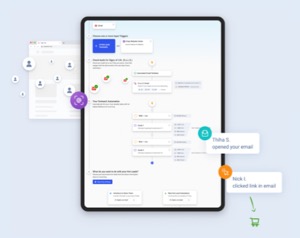
See Who Is On Your Site Right Now!
Turn anonymous visitors into genuine contacts.
Try it Free, No Credit Card Required
Understanding Identity Resolution
At its heart, identity resolution seems pretty simple. But there is a lot to it and understanding what it is and its role in business and marketing is important.
What is Identity Resolution?
Identity resolution is a data processing technique used by marketers to aggregate and analyze interactions and touchpoints from various sources to build a singular, cohesive identity of a consumer.
This process involves matching customer data points, such as email addresses, social media profiles, and device identifiers, across different channels and platforms.
By doing so, it allows businesses to understand and track an individual’s journey with their brand, enabling personalized marketing efforts and a more comprehensive understanding of consumer behavior.
Ok…that’s the boring definition.
Identity resolution basically takes all the things you know about your customers and prospects and puts them into one place (think name, email, address, business role, family connections, hobbies, etc).
For marketers, this is GOLD!
What are the Two Types of Identity Resolution?
It’s important to note there are two types of identity resolution: deterministic and probabilistic.
Deterministic matching operates on the principle of exactness, linking customer records by pinpointing exact matches among identifiers such as email addresses, phone numbers, or usernames. This method is best when there’s a wealth of first-party data at one’s disposal.
On the flip side, probabilistic matching takes a more nuanced approach, estimating the probability that different identifiers—think IP addresses, device types, browsers, or operating systems—belong to the same customer. While this approach might not offer the certainty of deterministic matching, it opens doors when first-party data is scarce or when expanding reach is the goal.
While no one likes what essentially feels like “guesswork”, sometimes probabilistic is the only way to go.
What Technologies Are Used in Identity Resolution?
There are a lot of technologies that go into identity resolution. After all, to get a true picture of an individual, you need to track them both online and in real life.
Here’s a breakdown of how to think about it:
The Collectors: Data Management Platforms (DMPs)
DMPs collect and organize data from a variety of sources, enabling marketers to better understand and segment their audiences. They are essential for targeting and personalization efforts in marketing campaigns.
The Organizers: Customer Relationship Management (CRM) Systems
CRMs store and manage customer interactions across different channels, providing a unified view of the customer journey. This helps businesses tailor their communications and improve customer relationships.
The Brainiacs: Artificial Intelligence (AI) and Machine Learning (ML)
AI and ML technologies analyze data to identify patterns and predict future behaviors. They enhance identity resolution by improving the accuracy of matching customer data across various sources.
The Connectors: Identity Graphs
Identity graphs compile data from multiple channels and devices to create comprehensive profiles of individual customers. They are key to understanding customer behavior and delivering consistent marketing messages.
The Protectors: Blockchain Technology
Blockchain offers a secure and transparent way to manage identity data. Its decentralized nature helps protect against fraud and ensures the integrity of customer information.
These technologies collectively empower marketers to achieve a holistic understanding of their customers, driving more effective and efficient marketing strategies.
Convert Website Visitors into Real Contacts!
Identify who is visiting your site with name, email and more. Get 500 contacts for free!
The Benefits of Identity Resolution for Marketers
Over the past few years, marketers have seen more and more of their data disappear.
In 2020, we saw iOS 14 wipe out ad audiences and in 2024, we are seeing cookies crumble to the wayside.
Oh, and did I mention GA4?
The result is an urgent need for a solution that gives us our data back and helps us make smarter marketing decisions.
Let’s look at a few ways identity resolution benefits marketers.
1. Personalized Marketing at Scale
With identity resolution, marketers can move beyond broad segmentation and generic messaging to tailor their outreach with precision.
This capability is only possible because of the rich, unified customer profiles that identity resolution provides – preferences, behaviors, interaction histories, and more.
With this data, marketers can craft messages that speak directly to the needs and interests of each customer, enhancing engagement and fostering loyalty.
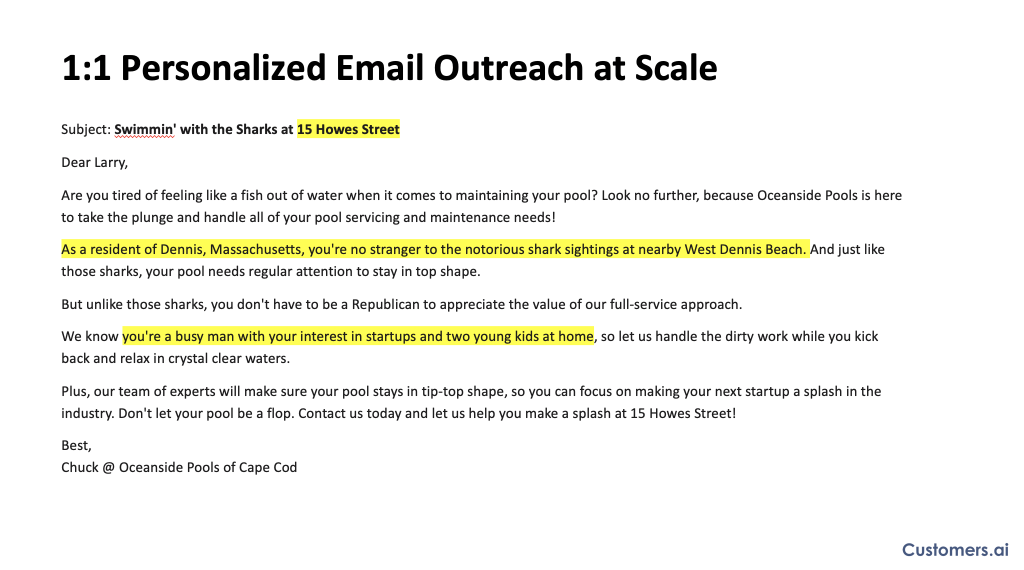
Additionally, the scale at which personalized marketing can be achieved with identity resolution is totally unprecedented.
Automated technologies and sophisticated algorithms allow for the processing of huge amounts of data, ensuring that personalized experiences can be delivered to not just hundreds, but millions of customers simultaneously.
This scalability ensures that businesses of all sizes can leverage the power of personalization to compete effectively in their markets.
2. Enhanced Targeting and Retargeting Campaigns
As we’ve discussed many times, one of the biggest victims of privacy changes is retargeting.

Campaigns that used to perform unbelievably well now barely make a dent. Unless you have extremely targeted and segmented first-party lists, you might as well kiss retargeting success goodbye.
That’s where identity resolution comes in. It gives you the first-party data you need to retarget efficiently.
That first-party data can be put directly into your retargeting campaigns, allowing you to reach the right people, with the right message, in the right place.

The real bonus is that by accurately identifying and understanding customers across devices and platforms, marketers can ensure that their advertising dollars are being spent on the most receptive audiences.
3. Attribution and Customer Journey Mapping
Remember when Google Analytics would tell you which pages a user landed on, which pages they visited, and which channel they converted from?
That feels like a lifetime ago and I hate to tell you, it’s not getting any better.
Unless….
You guessed it – identity resolution!
Identity resolution gives us back some of the attribution and customer journey mapping data we used to have.
If you are using the Customers.ai Website Visitor ID X-Ray pixel for example, you can see the pages each user visited, if they were sent an email, and if they made a purchase. Crazy right?!

By accurately linking each interaction to the same individual, we can map out the entire customer journey, from initial awareness through to conversion.
This granular view allows marketers to attribute conversions and other key actions to the specific channels, campaigns, and messages that influenced them, providing invaluable insights into what works and what doesn’t.
Even better, understanding the customer journey at this level helps marketers to optimize their strategies in real time, reallocating resources to the most effective channels and touchpoints.
The role of identity resolution in marketing cannot be overstated. By leveraging the comprehensive insights provided by identity resolution, marketers can deliver the right message, to the right person, at the right time, maximizing impact and driving sales.
Future Trends in Identity Resolution
Identity resolution may not be a new concept but it does feel like it’s starting to make waves in the marketing space.
Previously, CDPs and identity resolution platforms were only accessible to big companies with big budgets.
Not anymore.
Emerging trends and technologies, such as AI and blockchain, are making this technology more accessible and redefining how marketers understand and interact with their audiences.
These advancements promise not only to enhance the accuracy and efficiency of marketing programs and reshape consumer experiences in exciting new ways. Let’s look at a couple trends impacting the future of identity resolution.
The AI Revolution in Identity Resolution
AI is already taking identity resolution to new heights (hello….CUSTOMERS.AI).
With its ability to process and analyze data at unprecedented scales, AI is improving the accuracy of matching algorithms, enabling more precise identification of individuals across devices and platforms.

This leap in precision will allow for even more personalized marketing strategies, as businesses will be able to understand their customers’ needs and preferences in real time, responding with tailored messages that hit the mark every time.
Moreover, AI’s predictive capabilities are set to revolutionize customer journey mapping, forecasting future behaviors based on past interactions.
Blockchain: Privacy and Security
Customers.ai is a 100% privacy-compliant solution but we do understand people’s concerns when they hear about this groundbreaking technology.
As consumers become more aware of their digital footprint, the demand for transparent and secure data practices continues to rise.
Blockchain technology offers a promising solution to the growing concerns around privacy and data security in identity resolution.
By creating a decentralized record of customer identities, blockchain can provide a secure framework that respects user privacy while still allowing for personalized marketing.
This balance between personalization and privacy is the holy grail for marketers, and blockchain could be the key to achieving it.
Marketing Technology Integrations
The potential for identity resolution to integrate seamlessly with other marketing technologies is immense.
The goal? A unified marketing ecosystem where every piece of customer data is leveraged to its fullest potential, delivering a cohesive and personalized customer experience across all touchpoints.
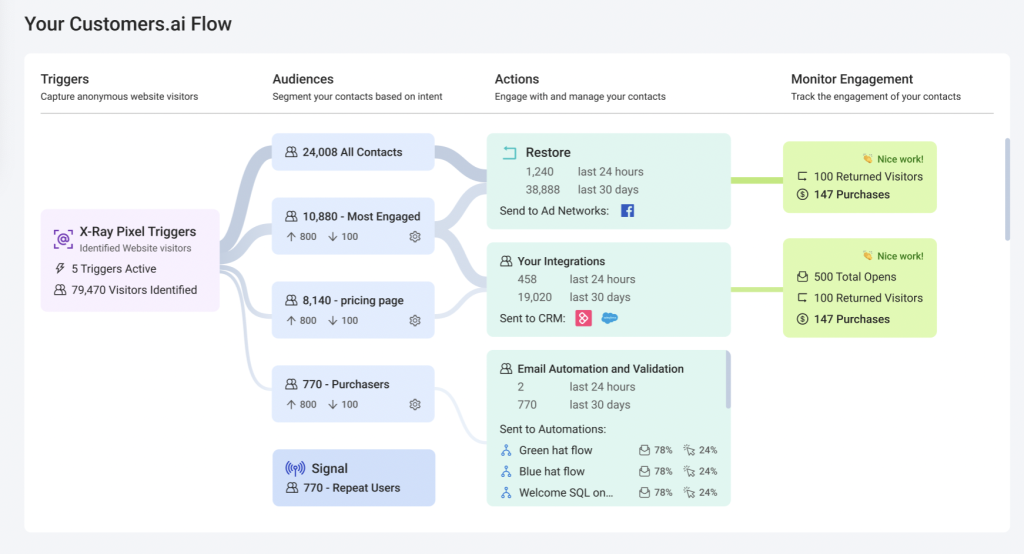
Such a connected ecosystem would not only streamline marketing operations but also provide deeper insights into customer behavior, enabling more strategic decision-making.
As identity resolution becomes more intertwined with other marketing technologies, we can expect to see a more holistic approach to customer engagement, where every interaction is informed by a comprehensive understanding of the individual’s journey.
Implementing Identity Resolution in Your Marketing Strategy
If you aren’t convinced identity resolution is the future of marketing, we encourage you to continue exploring the data that is out there.
If are you, and you are ready to take the next step, then Customers.ai is a great entry point:
Contact Capture & Data Enrichment
At the heart of Customers.ai is our ability to identify website visitors. This includes names, emails, business profiles, company data, LinkedIn profiles, and more.
Additionally, once we have contacts captured, we can enrich each individual with additional data points.
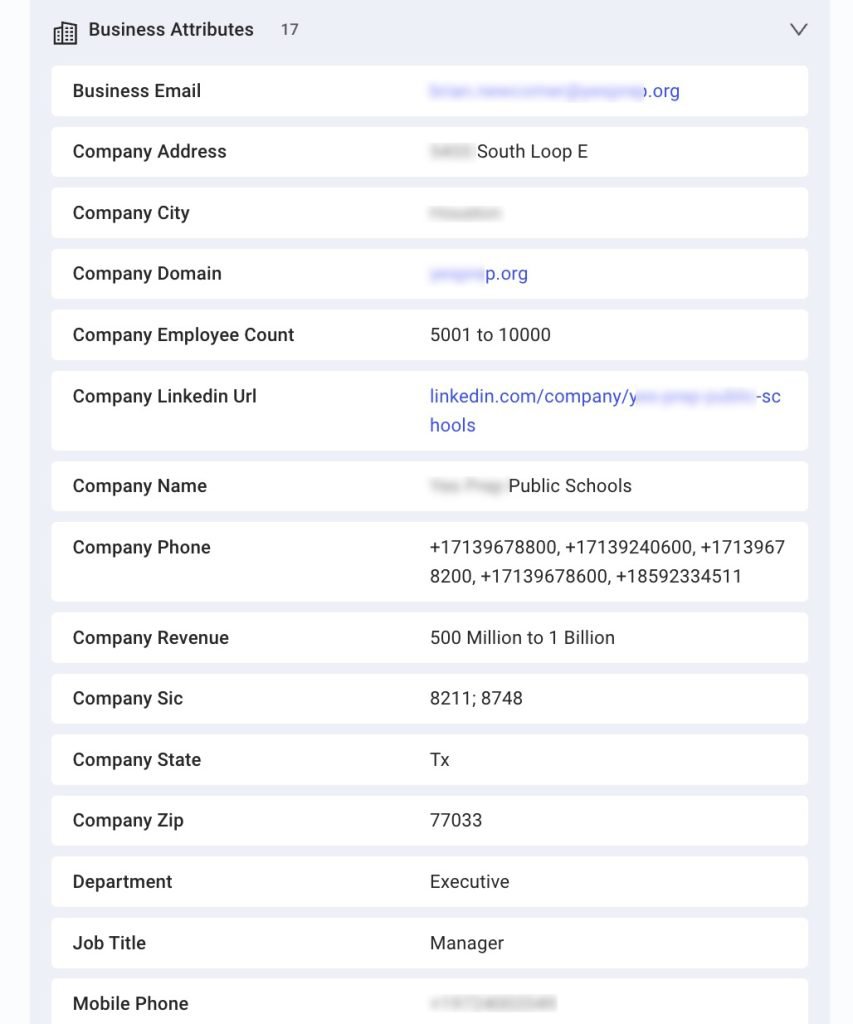
Precision Targeting and Personalization
With Customers.ai, precision targeting becomes more than a buzzword—it’s a reality.
Our X-ray tool allows you to not only capture visitor data but also segment into specific audiences.

This capability allows for the delivery of highly personalized content, offers, and messages that resonate with the individual preferences and needs of each customer.
Enhanced Attribution and Journey Mapping
The attribution and customer journey mapping that was taken away…no longer.

By providing a clear and cohesive view of the customer journey across channels and devices, marketers can attribute conversions accurately and understand the impact of various touchpoints.
This insight is invaluable for optimizing marketing strategies, reallocating budget to the most effective channels, and tailoring customer experiences to encourage loyalty and repeat business.
Ready to Take the Next Step in Your Identity Resolution Journey?
Customers.ai represents a pivotal advancement in identity resolution, offering marketers the tools they need to engage their audiences more effectively, understand their behaviors and preferences in greater depth, and drive meaningful interactions at every touchpoint.
With Customers.ai, businesses are well-equipped to meet the challenges of modern marketing and harness the full power of personalized engagement.
If you are ready to get started, Customers.ai is free to try and easy to set up.
To install the Website Visitor ID X-Ray Pixel, sign up (for FREE!), go to your dashboard, and navigate to My Automations.
Select + New Automation and get your pixel. We have easy install options for Google Tag Manager, WordPress, and Shopify, or you can install the pixel manually.

If you want to learn more, don’t hesitate to contact us or reach out to sales team with questions.
Important Next Steps
- See what targeted outbound marketing is all about. Capture and engage your first 500 website visitor leads with Customers.ai X-Ray website visitor identification for free.
- Talk and learn about sales outreach automation with other growth enthusiasts. Join Customers.ai Island, our Facebook group of 40K marketers and entrepreneurs who are ready to support you.
- Advance your marketing performance with Sales Outreach School, a free tutorial and training area for sales pros and marketers.
Convert Website Visitors into Real Contacts!
Identify who is visiting your site with name, email and more. Get 500 contacts for free!
Identity Resolution FAQs
Q. What is identity resolution in marketing?
Identity resolution in marketing is the process of integrating multiple identifiers across different devices and platforms to build a cohesive, unified view of an individual consumer, enabling personalized marketing strategies.
Q. How does identity resolution work?
Identity resolution works by collecting data from various sources, matching and linking identifiers like email addresses, social media profiles, and device IDs to create a comprehensive profile of a consumer’s interactions with a brand.
Q. Why is identity resolution important?
Identity resolution is crucial for understanding consumer behavior across channels, enabling personalized marketing, improving customer experiences, and increasing the effectiveness of targeting and retargeting campaigns.
Q. What are the benefits of identity resolution?
Benefits include enhanced targeting accuracy, personalized customer experiences, improved attribution and ROI, and the ability to engage consumers consistently across multiple touchpoints.
Q. What challenges does identity resolution face?
Challenges include data privacy regulations, the phasing out of third-party cookies, data fragmentation, and ensuring accuracy and completeness of customer profiles.
Q. How does identity resolution impact data privacy?
Identity resolution must balance personalized marketing with data privacy, adhering to regulations like GDPR and CCPA by managing consumer data transparently and securely.
Q. What technologies are used in identity resolution?
Technologies include Data Management Platforms (DMPs), Customer Relationship Management (CRM) systems, Artificial Intelligence (AI), Machine Learning (ML), and blockchain for secure data management.
Q. How does AI enhance identity resolution?
AI enhances identity resolution by improving the accuracy of data matching and prediction of consumer behavior, allowing for more sophisticated personalization and targeting.
Q. Can identity resolution work without third-party cookies?
Yes, identity resolution can work without third-party cookies by relying on first-party data, contextual targeting, and emerging technologies like AI and blockchain for data matching.
Q. What is deterministic matching in identity resolution?
Deterministic matching involves linking customer data across channels and devices using precise identifiers like email addresses or phone numbers, ensuring high accuracy.
Q. What is probabilistic matching in identity resolution?
Probabilistic matching estimates the likelihood that different identifiers belong to the same consumer, using data points like IP addresses and device types, useful when precise data is limited.
Q. How do identity graphs facilitate identity resolution?
Identity graphs compile and connect individual data points across channels and devices into a unified profile, enabling a comprehensive view of consumer behavior.
Q. What role does identity resolution play in attribution modeling?
Identity resolution enables accurate attribution modeling by linking every touchpoint and conversion to the correct consumer journey, clarifying the impact of each marketing channel.
Q. How can marketers improve identity resolution?
Marketers can improve identity resolution by investing in quality data sources, adopting advanced technologies like AI, and ensuring compliance with privacy regulations.
Q. What is the future of identity resolution?
The future of identity resolution includes increased reliance on AI and machine learning, the integration of blockchain for security, and adaptation to privacy-focused web environments.
Q. How does identity resolution enhance customer journey mapping?
Identity resolution provides detailed insights into each consumer’s path to purchase, allowing marketers to tailor experiences and communications at every stage of the journey.
Q. Can identity resolution improve online advertising?
Yes, by enabling precise targeting and retargeting based on unified customer profiles, identity resolution significantly improves the relevance and effectiveness of online advertising.
Q. What is the difference between identity resolution and data enrichment?
Identity resolution focuses on linking customer data across touchpoints to build a unified profile, while data enrichment involves adding external data to existing profiles to enhance understanding.
Q. How does blockchain technology benefit identity resolution?
Blockchain offers a secure, transparent framework for managing identity data, potentially enhancing privacy and trust in personalized marketing practices.
Q. What is the impact of GDPR on identity resolution?
GDPR requires stringent data protection measures and consumer consent, impacting how identity resolution processes handle and link EU citizens’ data.
Q. How do CRM systems complement identity resolution?
CRM systems provide a central repository for customer data, which, when integrated with identity resolution practices, enhances the understanding and personalization of customer interactions.
Q. How does identity resolution support omnichannel marketing?
Identity resolution enables consistent, personalized marketing messages across all channels by providing a unified view of the customer, essential for omnichannel strategies.
Q. What are identity graphs and how are they created?
Identity graphs are databases that link an individual’s identifiers across different platforms and devices, created by aggregating and matching data from various sources.
Q. How does identity resolution affect retargeting campaigns?
Identity resolution improves retargeting campaigns by accurately identifying and following consumers across devices, leading to more relevant and effective ad placements.
Q. What is the significance of first-party data in identity resolution?
First-party data is crucial for identity resolution in a privacy-focused era, offering a reliable, consent-based source of customer information for personalization efforts.
Q. How can businesses ensure accuracy in identity resolution?
Businesses can enhance accuracy by continually updating their data, utilizing advanced matching algorithms, and integrating various data sources for a comprehensive view.
Q. What role does machine learning play in identity resolution?
Machine learning algorithms analyze and predict consumer behaviors, improving the efficiency and accuracy of matching customer data across platforms and devices.
Q. How can identity resolution drive customer loyalty?
By enabling personalized interactions that meet consumers’ needs and preferences, identity resolution fosters positive experiences, enhancing customer satisfaction and loyalty.
Q. What are the best practices for implementing identity resolution?
Best practices include prioritizing data quality, ensuring privacy compliance, leveraging AI and machine learning for data matching, and integrating identity resolution with broader marketing strategies.
Q. How does identity resolution influence marketing ROI?
Identity resolution enhances marketing ROI by improving targeting accuracy, reducing ad waste, and delivering personalized experiences that drive conversions and customer retention.
